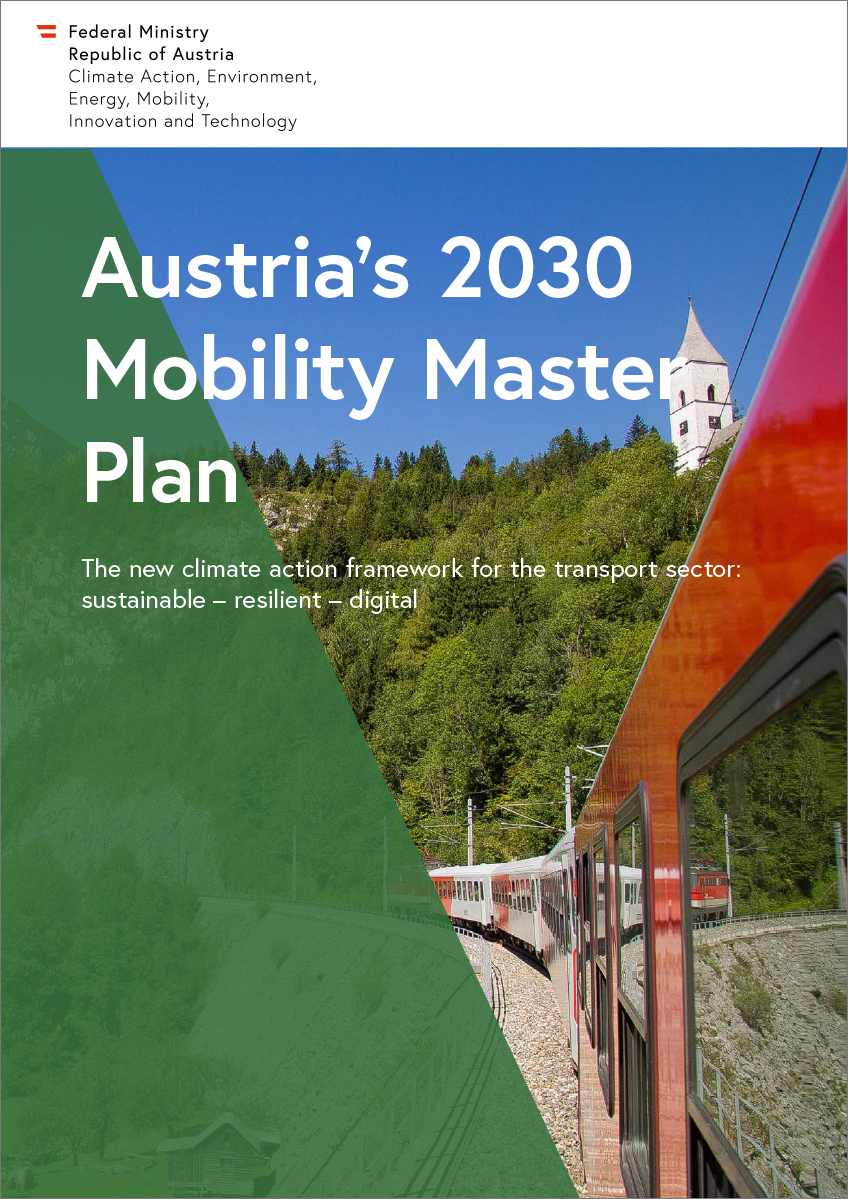Austria's 2030 Mobility Master Plan Realigning the mobility sector – meet the requirements of the Paris Climate Agreement
The 2030 Mobility Master Plan therefore identifies ways to avoid, shift and improve traffic and transport and significantly increase the share of eco-mobility in total transport – foot and bicycle traffic, public modes of transport, and shared mobility.

Mobility satisfies basic human needs, and goods transport plays a key role in economic progress. At the same time, tackling the climate crisis in the transport sector is especially challenging. We need clear frameworks and dedicated implementation programmes to reverse the trend in carbon emissions.
Much has changed since the last strategic planning document for the transport sector, the Austrian Transport Master Plan for 2012, was published. Mainstream society has become more aware of the climate crisis. Even more advancements in digitalisation have been made. The pandemic immediately turned our lives upside down, with no timeline for returning to a pre-Covid normal. Yet our priorities now remain the same as they were back then: Transport must be social, safe, environmentally friendly and efficient.
The federal government’s target of becoming climate-neutral by 2040, which is consistent with the science, meets the requirements of the Paris Agreement. However, all stakeholders at the European level and in Austria must act in concert if we are to meet this aim. The European Commission’s European Green Deal is an opportunity to make this happen. The EU’s ambitious climate targets for 2030 and beyond will provide massive support for Austria’s mobility transition.
Achieving a climate-neutral transport sector by 2040 is the project of the century. The vision for 2040 outlines our ideal future, which serves as the basis for backcasting: planning by starting with our target and working our way back. When we were designing the 2030 Mobility Master Plan, it quickly became clear that we needed a way to connect our vision for 2040 with today’s reality. Extrapolating based on past and current trends alone would not be enough to meet the objective of this project of the century: to become climate-neutral by 2040. The necessity of decarbonising the transport sector by 2040 has made it clear that we need more than just forecasts of how transport will develop. We need clear solutions that will ensure that we meet this target.
The starting point for the 2030 Mobility Master Plan is therefore a backcasting model, which is based on a sensible combination of avoiding traffic, shifting traffic and improving the efficiency of each mode of transport. It is backed by a marked increase in the energy-efficiency of the entire transport system within the available carbon budget. We used studies (such as the Transition 2040 project of the Environment Agency Austria, which was commissioned by the Austrian Federal Ministry for Climate Action, Environment, Energy, Mobility, Innovation and Technology), expert assessments and plausibility analyses, for example, to specify traffic and transport services, capacity utilisation, final energy consumption and modal split boundaries for the development of transport demand.
We adjusted the three variables of avoiding, shifting and improving to decide on a plausible state for a carbon-free transport system, which we could use as a basis for developing clear measures. The figures provided are intended as indicators of the scope and direction of changes.
Austria's 2030 Mobility Master Plan (PDF, 3 MB)
Tip
Further specialist strategies in English for the implementation of the Mobility Master Plan 2030: